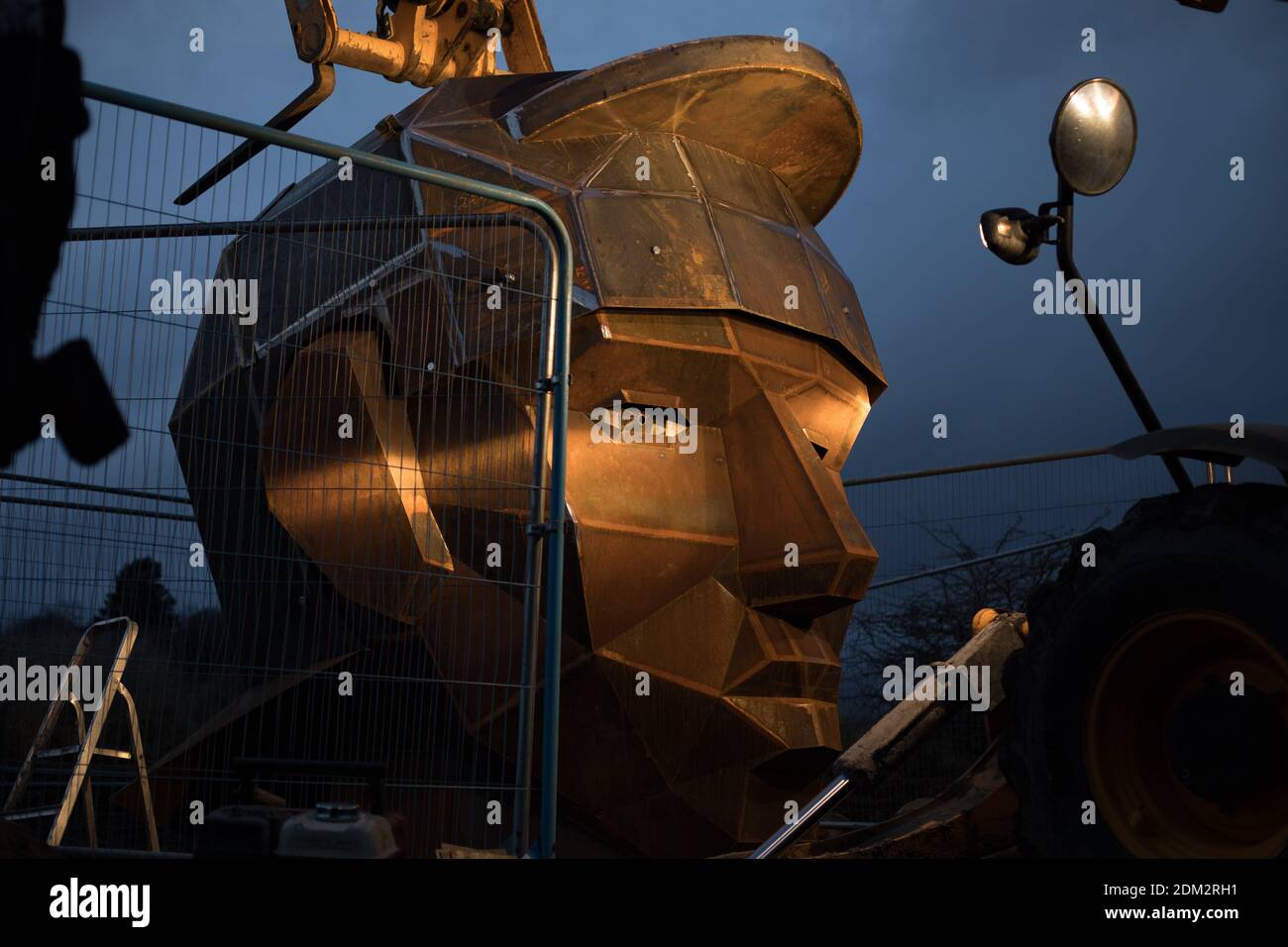Nethercroy, Scotland, UK, 16th December 2020. Work continues on the installation of a 6-metre sculpture, by artist Svetlana Kondakova, of a Roman soldier's head, nick-named Silvanus - after the Roman God protector of fields, forest and cattle, and a name which chosen by a public vote, at the Nethercroy site on the route of the Roman-era Antonine Wall. The sculpture, built by Big Red Blacksmiths, was commissioned as part of a wider 'Rediscovering the Antonine Wall' project. Working across central Scotland the project aims to build better connections for communities and visitors along the length

Image details
Contributor:
jeremy sutton-hibbert / Alamy Stock PhotoImage ID:
2DM2RH1File size:
86.1 MB (2.5 MB Compressed download)Releases:
Model - no | Property - noDo I need a release?Dimensions:
6720 x 4480 px | 56.9 x 37.9 cm | 22.4 x 14.9 inches | 300dpiDate taken:
16 December 2020Location:
Nethercroy, Scotland, UKMore information:
This image could have imperfections as it’s either historical or reportage.
Nethercroy, Scotland, UK, 16th December 2020. Work continues on the installation of a 6-metre sculpture, by artist Svetlana Kondakova, of a Roman soldier's head, nick-named Silvanus - after the Roman God protector of fields, forest and cattle, and a name which chosen by a public vote, at the Nethercroy site on the route of the Roman-era Antonine Wall. The sculpture, built by Big Red Blacksmiths, was commissioned as part of a wider 'Rediscovering the Antonine Wall' project. Working across central Scotland the project aims to build better connections for communities and visitors along the length of the Antonine Wall. It is managed by a steering group of five local authorities (West Dunbartonshire, Glasgow City, East Dunbartonshire, North Lanarkshire and Falkirk Councils) and Historic Environment Scotland.